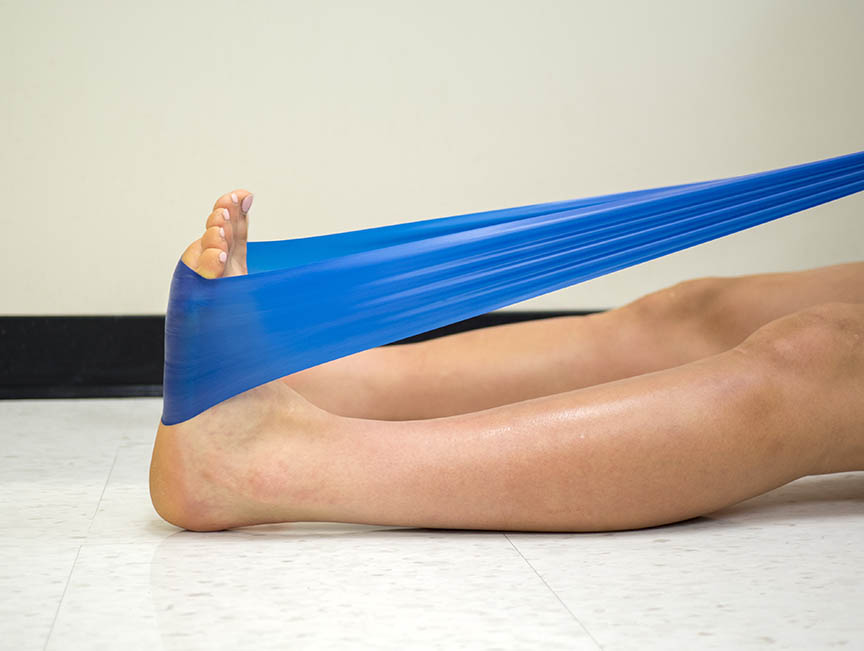7 Common Types of Physical Therapy You Should Know About
 Physical therapy is an area of medicine focused on helping the body to function properly through a series of exercises, technologies, and therapies. People may seek physical therapy to recover from an injury, prevent an injury, manage an existing condition, or improve their general health. While general physical therapists can help patients with many issues, it is also possible for them to undergo additional training and specialize further. There are seven main areas that a physical therapist can specialize in.
Physical therapy is an area of medicine focused on helping the body to function properly through a series of exercises, technologies, and therapies. People may seek physical therapy to recover from an injury, prevent an injury, manage an existing condition, or improve their general health. While general physical therapists can help patients with many issues, it is also possible for them to undergo additional training and specialize further. There are seven main areas that a physical therapist can specialize in.
1. Neurological Physical Therapy
Nerves control every function in the body by allowing the brain to communicate with the spine and other body parts or systems. Conditions that are neurological in nature break down this communication and can have serious impacts, both physical and mental. A patient recovering from spinal and brain injuries or neurological conditions like a stroke or Alzheimer’s may see a neurological physical therapist.
Almost all neurological conditions are chronic and unable to be easily treated with medication or a simple procedure. Instead, physical therapy is able to use a series of sessions to improve mobility and coordination in those with neurological problems.
This physical therapy may be less intense than other forms of treatment, instead focusing on small physical exercises that gradually reduce the impact of a neurological condition. Patients may significantly improve or regain full autonomy as a result of treatment.
2. Occupational Heatlth PT
Occupational health PT focuses on the ability to complete tasks related to work or recovering from injuries sustained at work that are not accidents. For example, an occupational health physical therapist may teach manual laborers to properly lift an object without damaging the back.
This therapy may also focus on building core and body strength that facilitates safer physical activity. However, it is also very holistic and ensures the entire body is able to properly perform their job duties.
3. Geriatric Physical Therapy
Aging people have unique sets of physical needs that can cause problems, from degenerative conditions to deterioration in natural movement. A geriatric physical therapist works specifically with the older population to address mobility and movement issues.
This therapy may address natural issues, helping senior citizens to maintain their strength and ability to move for as long as possible, as well as conditions like arthritis, osteoporosis, and even certain cancers. Goals may include reducing pain and increasing range of motion through small, manageable exercises.
4. Pediatric Physical Therapy
Age-based pediatric physical therapy is aimed at children, helping to facilitate the growth and mobility needs of infants, toddlers, and adolescents. Any child who has problems with body movement that impede their lives can benefit from this therapy. A pediatric physical therapist can work with children who have genetic conditions, congenital disabilities, severe injuries, head trauma, or limb disabilities.
Early intervention is critical in all forms of development, and parents that catch these issues early on and begin physical therapy can increase a child’s chances of becoming a strong and healthy adult.
5. Post Surgical Physical Therapy
Physical therapy will be used after a major event like an injury or surgery in order to regain strength and ease of movement.
For surgical patients, mobility and movement are often limited in the body part being operated on. A physical therapist will usually begin working with them immediately after their procedure to strengthen certain body parts, continuing to support their recovery at home until the patient can take care of themselves properly.
Injuries, especially sports injuries, are also commonly treated by these physical therapists. The earlier therapy begins, the better the recovery chances are. Physical therapy not only addresses these injuries through strength building and pain management, but can also help prevent future injuries.
6. Hand Physical Therapy
Despite the name, hand physical therapy is actually focused on the entire arm. While the hand or fingers could be impacted, conditions like arthritis or carpal tunnel may also affect the wrist and forearm. This physical therapy will use simple hand exercises to maintain or regain range of motion in the hand.
7. Orthopedic Physical Therapy
When there is damage to the musculoskeletal system, an orthopedic physical therapist will be able to help by reducing muscle atrophy and building strength. This can include recovery from orthopedic surgery, as well as arthritis, sports injuries, amputations, and other conditions. These physical therapists will craft exercises specific to the area of your body that is injured and what your goals for recovery are.